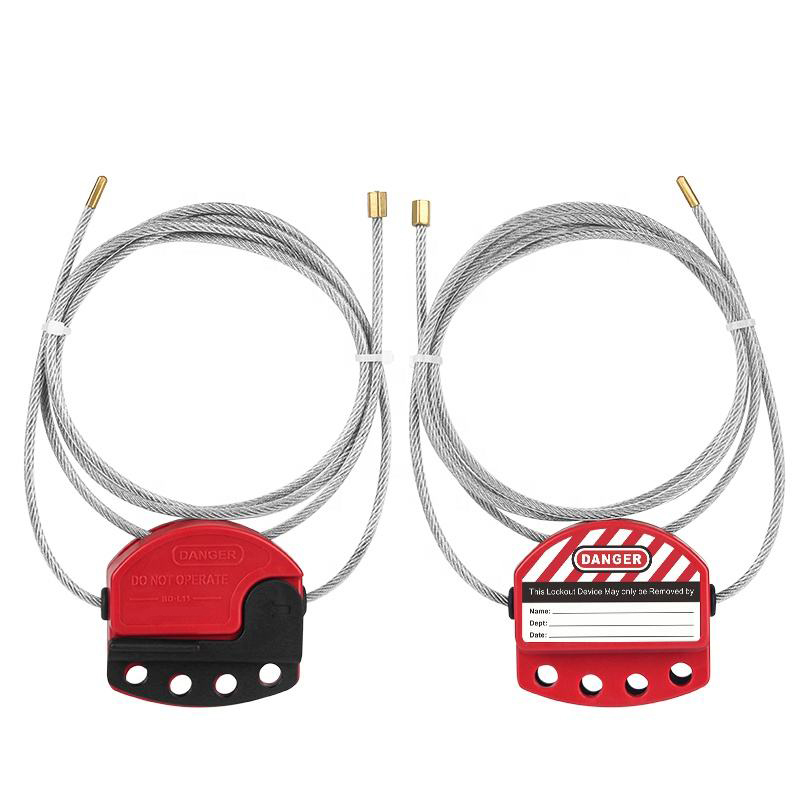In industrial environments, ensuring the safety of maintenance and repair personnel is a top priority. One of the most effective ways to protect workers from hazardous energy during service operations is through the implementation of proper lockout procedures. Among the various tools available, cable lockout systems have emerged as a versatile and reliable solution for securing multiple isolation points simultaneously.
These systems provide a flexible way to isolate electrical, pneumatic, hydraulic, and mechanical energy sources — making them especially valuable in complex or multi-point machinery setups. Whether you're managing a small production line or overseeing large-scale industrial operations, understanding how to effectively use cable lockout systems can significantly enhance your organization’s safety culture and regulatory compliance.
This guide will walk you through the essentials of cable lockout systems, including their components, benefits, and best practices for implementation. By following these principles, you’ll be better equipped to prevent accidental equipment startup and ensure a safer working environment for all personnel involved.

A cable lockout system is a safety device designed to secure one or more energy-isolating points on industrial equipment. It typically consists of an adjustable locking cable, a clamping mechanism, and a means to apply padlocks — allowing multiple users to lock out a single point together.
Unlike rigid lockout devices that may only fit specific shapes or sizes, cable lockouts offer greater flexibility, enabling them to wrap around or through different types of valves, switches, and handles. This adaptability makes them ideal for diverse applications across industries such as manufacturing, oil and gas, chemical processing, and power generation.
The system works by threading the cable through the isolation point, tightening it to eliminate slack, and then securing it with a locking mechanism. Once locked in place, the energy source remains isolated until all authorized personnel remove their respective padlocks.
Cable lockouts are not limited to a single machine type. Their adjustable design allows them to be used on a wide range of equipment, including oversized handles, irregularly shaped valves, and multi-switch panels.
OSHA’s 29 CFR 1910.147 standard outlines strict requirements for controlling hazardous energy during servicing and maintenance. Cable lockout systems support full compliance with these regulations by offering a standardized method for isolating energy sources.
Because they reduce the need for multiple specialized lockout tools, cable lockout systems offer a cost-efficient alternative. Their reusable nature also contributes to long-term savings while minimizing waste.
Implementing a successful cable lockout procedure involves more than just applying a cable and padlock. It requires planning, training, and consistent execution. Here's a step-by-step approach to help you get started:
Before beginning any maintenance work, locate and mark all potential energy entry points. This includes electrical circuits, pneumatic lines, hydraulic connections, and mechanical linkages.
Tip: Use facility schematics or equipment manuals to ensure no isolation point is overlooked.
Select a cable that matches the operating conditions of your environment:
Thread the cable through or around the identified isolation component (e.g., valve handle), then pull it tight and insert the free end into the locking base unit. Ensure the tension is sufficient to prevent movement or loosening.
Tip: If multiple workers are involved, use a hasp-style adapter so each person can apply their own personal padlock.
Once the cable is secured, attach a padlock to prevent unauthorized removal. Also, affix a warning tag that clearly states:
This information helps maintain accountability and ensures that no one unknowingly reactivates the system.

To ensure long-term success, consider the following best practices:
Conduct periodic checks of cables, locks, and tags for signs of wear or damage. Replace any compromised components immediately to avoid safety risks.
Provide regular training sessions to ensure that all personnel understand how to correctly apply and remove cable lockouts. Emphasize the importance of following lockout procedures consistently.
Keep spare cables, padlocks, and tags readily available to avoid delays during maintenance activities. Having backup supplies ensures continuous compliance even during peak operational periods.
Cable lockout systems play a vital role in protecting workers from unexpected equipment activation during maintenance and repair tasks. Their flexibility, ease of use, and compatibility with various machinery types make them a preferred choice over traditional lockout methods.
By integrating cable lockouts into your company’s broader LOTO program and following best practices for application and maintenance, you can create a safer, more compliant workplace. Whether you're managing a small team or a large industrial facility, adopting this simple yet powerful tool is a smart investment in both safety and productivity.
Remember: every lockout is a step toward preventing accidents — and with the right tools and procedures in place, you’re well on your way to building a stronger safety culture.
As a leading China cable lockout manufacturer with over a decade of experience, ELECPOPULAR SAFETY provides a wide range of industrial-grade cable lockout systems designed to meet global safety standards. Our products are trusted in more than 50 countries and come backed by ISO certifications, national patents, and customizable OEM/ODM services.
Looking for a reliable partner in lockout/tagout safety?
Contact ELECPOPULAR SAFETY today for expert guidance and premium-quality solutions that help you protect what matters most — your people.
